Register now for GO-WV Summer Meeting

Register now, reserve your room and bring your family to the 2023 GO-WV Summer Meeting at The Greenbrier in White Sulphur Springs, West Virginia.
The fun of GO-WV’s Summer Meeting takes place August 13-15 and you won’t want to miss a minute of the industry updates and fun times awaiting you!

Golf tee times are available Sunday morning from 11:07 a.m. to 11:37 a.m. on the Greenbrier Course.
Sunday evening is the western-themed welcome reception and banquet atop Kate’s Mountain. Come enjoy our traditional buffet of lobster and filet mignon. The Josh Stewart Band will be providing entertainment for this popular comfortable and casual event.
Industry presentations and the business session will take place Monday from 9:00 a.m. to 11:00 a.m. in the Eisenhower Room. Guest speakers include Diversified Energy Company CEO Rusty Hutson, BHE GT&S President Paul Ruppert, CNX Corporation Chief Excellence Officer Olayemi Akinkugby and Artex Oil Company/Shale Crescent President Jerry James. Senators Capito and Manchin have been invited. The business meeting on Monday will include the election of an Insurance Committee member.
Jeff Isner Vice President & Program Chair
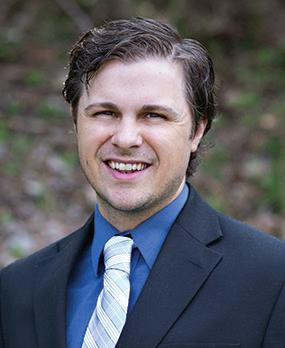
Summer Meeting Continued on page 25
GO-WV awards 13 scholarships in 2023
The Gas and Oil Association of WV (GO-WV) is proud to announce the awarding of scholarships to 13 outstanding high school seniors this spring. Among other requirements, eligibility was based on the student having at least one parent or the student being employed by a GO-WV member company and will be attending a West Virginia college or university. Since 1997, a total of $230,000 in scholarships has been invested in deserving high school students.
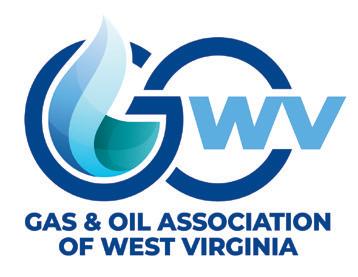

Zoe Jarvis has been named to receive the Lori Miller Smith Scholarship given to a female student who exhibits a passion for education. Jarvis is graduating from Charleston Catholic High School and will be attending West Virginia

Wesleyan. Her mother, Susan Jarvis, is employed by Diversified Energy.
Carly Harper has been named to receive the Jim Gehr Scholarship given annually to the student who exhibits the greatest commitment to community service. Harper is graduating from Roane County High School and will be attending Glenville State University. Her father, Brett Harper, is employed by Harris Oil Company.
2023 scholarship winners Continued on page 22

The Voice of the Gas and Oil Industry I N S I D E 2 Maribeth Anderson 3 Brianne Kurdock 4 Charlie Burd 5 Member news 6 Lisa Bruderly 7 Craig Colombo 8 Industry events 9 Kathy Hill 10 Greg Kozera 11 Thomas Downs 12 Christina Manfredi McKinley 13 Industry News 14-17 Jeff Isner 26 Ad contract 27 License plate application 28 Summer Meeting Sponsor Form 29 Summer Meeting Registration Form N E W S June 2023
Not often enough, but sometimes
As of this writing, a permitting reform measure has passed the U.S. House and Senate and is headed to the President’s desk. It includes the completion of the Mountain Valley Pipeline and is all tied together in the crucial deal to lift the debt ceiling. These reforms which support our industry are strongly supported by the Republican Speaker and the Democratic White House. Not by the longest shot do the measures represent everything the industry wants, but they are helpful.
Many are praising the spirit of compromise that seems to be part of the energy inclusions in the package, but of course it’s natural to us that oil and gas issues should be bipartisan issues. Why? Because, while they’re not the most important things, there’s no denying that everybody likes jobs and money.
A new report from PricewaterhouseCoopers and the American Petroleum Institute was released this month. According to the findings, in 2021, the gas and oil industry directly and indirectly:
• Supported 73,120 total jobs (25,460 direct and 47,660 indirect) or 8.5 percent of West Virginia’s total employment.
• Generated an additional 1.9 jobs elsewhere in West Virginia’s economy for each direct job in the state’s natural gas and oil industry.


• Provided $4.8 billion in labor income ($1.9 billion direct and $2.9 billion indirect) to West Virginia, 9.9 percent of the state’s total.
• Contributed $12.9 billion to West Virginia’s total gross domestic product ($8.1 billion direct and $4.7 billion indirect), 15.0 percent of the state’s total.
API President Mike Sommers stated, “This analysis serves as a reminder that we need policies and regulations that encourage investment and enable development.”
And so some of those policies and regulations will come to fruition as the debt ceiling bill has been debated. While many federal lawmakers find reasons to oppose our industry, these kinds of figures are tough to ignore. A nearly 13-billion dollar contribution to the West Virginia economy in one year alone!
Your GO-WV team will work to make sure policymakers at both the state and federal level know our powerful numbers, and that they know the faces behind those numbers.
I’ve heard it said that “Necessity is the mother of bipartisanship.” That’s probably true. And when the necessities that enable our way of life are brought by a safe and responsible industry that creates jobs and investment, bipartisanship is sometimes born. Not often enough, but sometimes.
2022-23 OFFICERS
President: Maribeth Anderson

Vice President: Jeff Isner
Secretary: Jason Harshbarger
Treasurer: Kelly Moss
Past Presidents: Ben Sullivan/Tom Westfall
BOARD MEMBERS
Craig Colombo, Hope Gas
Jim Crews, Marathon Petroleum
Scott Freshwater, Reserve Oil & Gas
Stephen Furbacher, Williams
Brett Loflin, Northeast Natural Energy
Sam McKown, McKown Associated Natural Resource Companies
Aaron Thompson, TC Energy
Chris Weikle, Southwestern Energy
Erik Woehrman, XTO
Ex Officio Members: John Bane, EQT
Doug Malcolm, D.C. Malcolm, Inc.
Members Emeritus: Marc Halbritter, Hydrocarbon Consulting
Ben Hardesty, Alta Energy
Lloyd Jackson, Jackson Management
Bob Orndorff
2
Maribeth Anderson GO-WV President
PHMSA releases proposed rule on pipeline leak detection and repair

On May 5, 2023, the Pipeline and Hazardous Materials Safety Administration (PHMSA) released the pre-publication version of a notice of proposed rulemaking (NPRM) titled “Gas Pipeline Leak Detection and Repair.” PHMSA published the NPRM in response to section 113 of the Protecting our Infrastructure of Pipelines and Enhancing Safety Act of 2020 (PIPES Act). Section 113 of the PIPES Act directed PHMSA to promulgate final regulations by December 27, 2021, requiring operators of gas transmission, distribution pipelines, and certain gathering lines to conduct leak detection and repair programs.




PHMSA proposes to amend 49 CFR Parts 191, 192, and 193 to: increase the frequency of leakage survey and patrolling requirements; introduce leakage survey and repair requirements for liquefied natural gas (LNG) facilities; require grading and repairs of leaks; reduce the use of blowdowns and intentional venting; impose design, configuration, and maintenance requirements for relief devices to reduce emissions; expand reporting requirements; and require that Type A, B, and C gathering lines submit geospatial pipeline location data to the National Pipeline Mapping System (NPMS).
PHMSA proposes a six-month effective date for this rulemaking.
Comments on the NPRM are due on July 17, 2023.
Scope
Among other notable features of the proposal, the scope of this NPRM extends beyond the Section 113 congressional mandate by including Type C gathering lines, underground natural gas storage facilities, and LNG facilities. The statutory mandate was limited to regulated gathering lines in a Class 2, 3, or 4 location, and new and existing gas transmission and distribution pipelines. The NPRM also includes provisions intended to avoid overlap with existing Environmental Protection Agency (EPA) leak detection and repair (LDAR) regulations at 40 CFR Part 60, Subpart OOOOa, and EPA’s proposed regulations that would be codified at 40 CFR Part 60, Subparts OOOOb and OOOOc. The scope of these anti-overlap provisions is unclear, and the provisions could prove difficult to implement from a practical perspective.
Key aspects of the NPRM include: Increased Leakage Surveys and Patrols
With the exception of distribution pipelines located within business districts, PHMSA proposes to increase the frequency of leakage surveys and right-of-way patrols for pipeline facilities and introduces these requirements for Type B and C gathering pipelines. PHMSA proposes that transmission operators conduct right-of-way patrols every 45 days with a minimum of 12 patrols each calendar year. The proposal reflects a significant expansion of the current obligations.
PHMSA proposes to expand the leakage survey obligation to all valves, flanges, meters, regulators, tie-ins, and launcher and receiver facilities. Further, the NPRM would restrict leakage surveys that exclusively use human senses to offshore pipelines below the waterline, or, with the prior approval of PHMSA, onshore transmission and gathering lines located outside of high consequence areas or in Class 1 or 2 locations. For all other leakage surveys, an operator must deploy
3 PHMSA rules Continued on page 19 Brianne K. Kurdock, Esq. (all authors from Babst Calland)
James Curry, Esq.
Gary E. Steinbauer, Esq.
Lee Banse, Esq.
From
Burd’s
Eleven years ago, I wrote an article (July 2012IOGA News) entitled “Freezing to death in the dark.” It outlined the Sierra Club’s “new” attack on natural gas called “Beyond Gas.” At that time, the Sierra Club’s executive director was quite direct in an interview with the National Journal in May 2012 when he stated: "We’re going to be preventing new gas plants from being built wherever we can." They went even further, saying: “Fossil fuels have no part in America’s energy future –coal, oil, and natural gas are literally poisoning us. The emergence of natural gas as a significant part of our energy mix is particularly frightening because it dangerously postpones investment in clean energy at a time when we should be doubling down on wind, solar and energy efficiency.”


Please don’t get the idea that we were first… hardly, in fact, natural gas finished third in this trifecta of attacks because before “Beyond Gas,” it was the “Beyond Coal” then “Beyond Oil.” Both former campaigns established the same goal to end all such development of these fuel sources and all the benefits that accompany them.
In that 2012 article, I quoted a Wall Street Journal editorial board member Steve Moore who had recently stated that “natural gas is the clean burning fuel, in fact from an environmental standpoint, it’s a wonder fuel.” Moore went on to say, “The use of natural gas dramatically reduces the emissions of carbon that are said to cause global warming and the U.S. has reduced its carbon footprint more than virtually any other industrialized country.” When asked what it would mean to the average American consumer if the Sierra Club was to prevail in curbing natural gas production in the U.S., Moore stated: “Look, I am a conspiracy theorist; I think the Sierra Club is just against any form of energy that works!”
Also, at that time the Wall Street Journal had recently written that “The Sierra Club, a former fan of natural gas, now opposes it simply because it’s being used. The 'greens' were happy to support natural gas as a 'bridge fuel to the 21st centu-
It
ry' when it cost $8 or more per million BTUs and seemed to be in limited domestic supply. But now that the hydraulic fracturing and shale revolution has sent gas prices down to $2.50, the lobby fears natural gas will come to dominate U.S. energy production. At that price, the Sierra Club's Valhalla of wind, solar and bio-fuel power may never be competitive. So the green left has decided it must do everything it can to reduce the supply of gas and keep its price as high as possible.”
Back in 2012, as I recall, there was little to no serious talk regarding carbon capture and sequestration, carbon offset programs and the term “net zero” had not been uttered. Simply, all fossil fuels were “the enemy” of society and energy needed to be “clean” with a call to double down on wind and solar energy. That talk is even louder today. But fearmongering is the trademark of the environmental elitists and due to our ultra-liberal left leadership in Washington, many of these outlandish initiatives are playing out.
Now as then, the call for the elimination of natural gas and oil is beyond absurd for more reasons than I have space to detail. However here are just a few:
1. All those solar panels and wind turbines rely on natural gas and oil to be manufactured, transported and operated. And because the wind doesn’t always blow, and the sun doesn’t always shine—there must be an energy backup system in place. Guess what…yep, that's most likely natural gas. It just ain’t that tough to figure out!
2. Traditional transportation fuels are natural gas and petroleum based. This includes gasoline, diesel, Jet A, Jet A-1, JP-5, JP-8 and naphtha type fuels including Jet B and JP-4. You’re not going far on wind or solar. And batteries in the best EV’s are reliant upon constant charging and have limited range with very little recharging infrastructure when compared
4
Charlie Burd GO-WV Executive Director Burd’s Nest Continued on page 21
the
Nest:
just ain't that tough to figure out!
GO-WV mourns passing of Tom Orrison

Thomas “Tom” Edward Orrison 65, of Winfield, WV went to be with the Lord on May 8, 2023. He fought a courageous battle with Idiopathic Pulmonary Fibrosis.
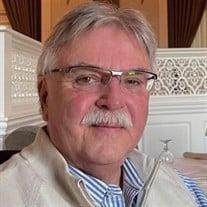
Tom was born on November 23, 1957 to the late William E. and Sue Orrison in Evansville, Indiana. He was a 1975 graduate of Winfield High School, attended West Virginia University and Marshall University. He spent his career as a salesman for McJunkin Corporation (MRC Global) and retired in 2020. He was a member of Winfield United Methodist Church.

Tom is survived by his beloved wife of 43 years, Debbie Orrison of Winfield; daughter: Sarah Beakes (Ben) of Cross Lanes; son: Drew Orrison (Jessica) of Charleston and his pride and joy, his grandchildren: Chloe and Cooper Beakes of Cross Lanes. In addition, he is survived by his father and mother-in-law: Mike and Mary Lou Albert of
St. Albans and sister-inlaw: Angela Potter of St. Albans.
Tom was known throughout the community for his “larger than life” personality and never met a stranger. He was known as one of the “good guys” and was held in high regard with his co-workers and friends. Tom loved his family fiercely and, with his wife Debbie, created a beautiful life and legacy.
In lieu of flowers, the family requests memorial donations be made in Tom’s name to: Winfield United Methodist Church 20 Radwin Dr. Winfield, WV 25213 or Cross Lanes Christian School “Tom Orrison Memorial Fund” 5330 Floradale Dr., Cross Lanes, WV 25313.
5 Member news
Sackett decision shrinks federal regulation of wetlands
On May 25, 2023, the U.S. Supreme Court issued a highly-anticipated decision that significantly narrows the extent of wetlands within the definition of “waters of the United States” (WOTUS), and, therefore, within the jurisdiction of the federal Clean Water Act (CWA). Under the majority opinion in Sackett v. EPA, the Court held that “waters” are limited to “only those relatively permanent standing or continuously flowing bodies of water" that are described as “streams, oceans, rivers, and lakes” and to “adjacent” wetlands that are “indistinguishable” from those bodies of water. Therefore, a wetland is only a WOTUS (and subject to CWA jurisdiction) if: (1) the adjacent body of water is a WOTUS (i.e., “a relatively permanent body of water connected to a traditional interstate navigable water”); and (2) the wetland has a “continuous surface connection” with that water “making it difficult to determine where the ‘water’ ends and the ‘wetland’ begins.” As Justice Samuel Alito stated: Federally regulated wetlands “must be indistinguishably part of a body of water that itself constitutes 'waters' under the CWA. . . . Wetlands that are separate from traditional navigable waters cannot be considered part of those waters, even if they are located nearby."



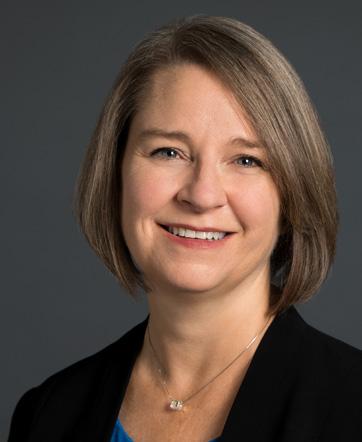

The Sackett litigation involves Michael and Chantell Sackett, who have been unable to build a house because the U.S. Environmental Protection Agency (USEPA) and the U. S. Army Corps of Engineers (the Corps) determined that a wetland on their Idaho property was a WOTUS, requiring CWA Section 404 permitting. Both the U.S. District Court for the District of Idaho and the Ninth Circuit sided with the Agencies’ WOTUS determination, citing the “significant nexus” test introduced by Justice Anthony Kennedy in his concurring opinion in the U.S. Supreme Court’s seminal Rapanos v. U.S. decision. Under the “significant nexus” test, a wetland is broadly considered to be a WOTUS if it, alone or in combination with similarly situated lands in the region, significantly affects the chemical, physical and biological integ-
rity of navigable waters.
On appeal, the U.S. Supreme Court agreed to examine whether the Ninth Circuit set forth the proper test to determine whether the Sacketts’ wetlands are WOTUS. The Court disagreed with the Ninth Circuit and, instead, upheld the plurality opinion of Rapanos (drafted by Justice Antonin Scalia), which stated that WOTUS should be limited to relatively permanent bodies of water connected to traditional interstate navigable waters and wetlands with a close physical connection to those waters, such that they are indistinguishable from those waters.
6
page 26 Lisa M. Bruderly, Esq. Babst Calland
Sackett decision Continued on
R.L. Laughlin & Co., Inc “Providing Gas Measurement Services since 1970” Site Automation Electronic Chart Integration Meter Sales Meter Installations Gas Analysis Calibrations & Repairs NOW SERVING YOU IN 3 LOCATIONS: 125 State Rt. 43 5012 Washington St., W. Hartville, OH 44632 Charleston, WV 25313 330-587-1230 304-776-7740 1205 Buckhannon Pike Nutter Fort, WV 26301 304-969-0033
GO-WV Board welcomes five new members in May
Please join the GO-WV Board of Directors in welcoming these members approved in May:

CLEAResult ISP
David Huber
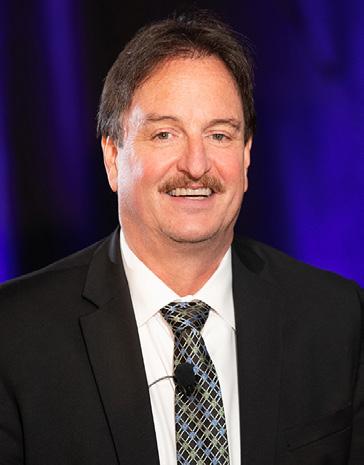
971 State Route 34, Suite 7
Hurricane, WV 25526
Phone: (304) 410-0110
Cell: (972) 800-1850
david.huber@clearesult.com

www.clearesult.com
Energy Resolutions, LLC ISP
Rick Smith
PO Box 107
Bridgeport, OH 43912
Work: (970) 683-0004
kgrey@er-brokers.com
Equitrans Midstream Corporation SAT
Michael Killion
2200 Energy Drive
Canonsburg, PA 15317
Phone: (412) 553-7764
Cell: (412) 266-6417
mkillion@equitransmidstream.com
www.equitransmidstream.com
Flogistix ISP
Kristin Hincke
6529 N. Classen Blvd.
Oklahoma City, OK 73116
Phone: (405) 206-0167
khincke@flogistix.com
www. flogistix.com
Zefiro Methane Corp. ISP
Kristin Smith
501 E. Las Olas Blvd.
Suites 200 & 300
Fort Lauderdale, FL 33301
Phone: (754) 233-3695
Cell: (865) 207-5748
kristin@zefiromethane.com
www.zefiromethane.com
7
Craig Colombo Membership Chair
Upcoming events planned for 2023
June 5-6, 2023
Science Teacher Workshop
Embassy Suites, Charleston, WV Info: gowv.com
June 6, 2023
Oil Patch Classic Golf Outing and Steak Fry
Wanango Country Club, Reno, PA Info: www.PIOGA.org > Events
August 3-4, 2023
OOGA Summer Meeting
Belmont Hills, St. Clairsville, OH Info: www.ooga.org
August 13-15, 2023
GO-WV Summer Meeting

The Greenbrier, White Sulphur Springs, WV Info: gowv.com
August 17, 2023
26th Annual Divot Diggers Golf Outing
Tam O’Shanter Golf Club, Hermitage, PA Info: www.PIOGA.org > Events
August 25, 2023
SOOGA Fall Golf Outing
Oxbow Golf Course, Belpre, OH Info: sooga.org
September 14, 2023
PIOGA’s Birds & BBQ Clay Shoot
West Penn Sportsmen’s Club, Murrysville, PA Info: www.PIOGA.org > Events
September 15-16, 2023
GO-WV Sports Weekend
Bridgeport Country Club, Bridgeport, WV
September 18, 2023
2023
BHE GT&S Charity Golf Invitational
Pete Dye Golf Club, Bridgeport, WV
September 21, 2023
SOOGA Annual Trade Show
ESB Community Building, Marietta, OH
Info: sooga.org
October 16-18, 2023
IOGCC Annual Conference
Park City, UT Info: iogcc.ok.gov
November 6, 2023
IPAA Annual Meeting
San Antonio, TX Info: ipaa.org
November 9, 2023
WVLMOA Fall Meeting
Berry Hills Country Club, Charleston, WV Info: wvlmoa.com
January 17-18, 2024
GO-WV Winter Meeting
Marriott Town Center Hotel, Charleston, WV
8
Industry Events BUYING GAS FOR HOPE GAS Craig Colombo VP Gas Supply 804-921-2788 48 Columbia Blvd. Clarksburg, WV 26301
Monthly Appalachian Basin crude oil prices



9
Hill Ergon
Kathy
Energy transition
Last week Lynnda and I headed to Maryland for our granddaughter’s high school graduation. On U.S. Highway 48 (Corridor H) west of Moorefield, we saw two ridge tops full of windmills. I have never seen that many in one place. The wind was blowing and all but a few of the windmills were turning. Electricity was being produced. We use a lot of electricity. In schools, chalkboards, pencils and even books are things of the past in favor of computers, ipads and the internet. Schools use a lot of electricity. My daughter is a teacher in Maryland. She said they couldn’t teach if the power went off. But what happens when the wind doesn’t blow?
My young grandson was with us on a trip a few years ago. Going over the mountains, very few windmills were turning. He asked, “Grandpa, how do those windmills make electricity when they don’t turn?” Out of the mouth of babes. My young grandson asked a question that adults should ask, but don’t. Some adults want to rid the world of fossil fuels without having a clue on how or what could replace natural gas and oil.
We hear a lot about energy transition. This isn’t new. Humans have experienced energy transitions since the beginning of our existence. Human energy, walking, was the original energy for transportation. Then animals like horses were used for transportation and to do physical labor like plowing or pulling wagons. Fire from wood became energy for heat, light and cooking. People used wind and sails to move ships. Whale oil was used for lighting and energy to cook, almost making whales extinct. Fortunately, oil began to be produced in commercial quantities in our region in the late 1850s. Cheap, abundant crude oil put most of the whalers out of business, saving whales from extinction. Coal became widely used for heating and manufacturing. It powered generators producing electricity for heating, lighting and cooking.
Gasoline was the fuel of choice for the auto industry because of its large amount of energy for
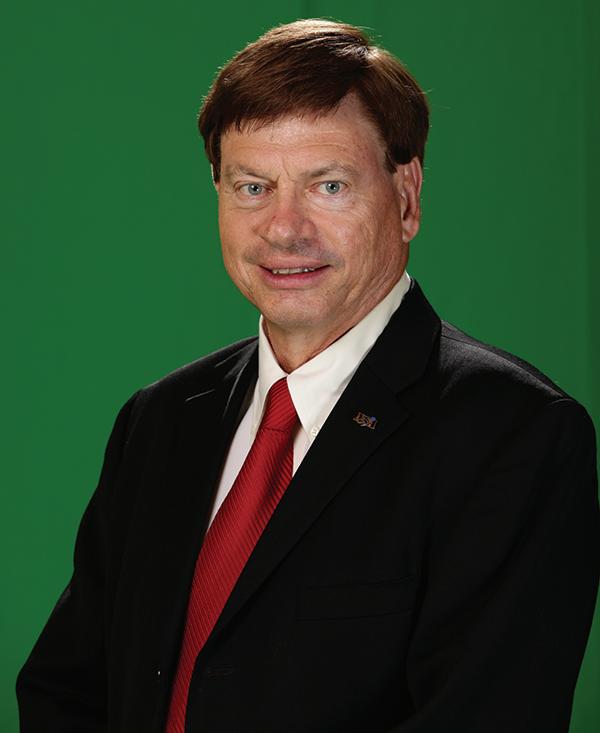
the space required. It is easy to transport compared to other fuels. Nuclear power was popular after WWII to produce electricity. It is clean and economical. With oil and natural gas reserves declining in the 1970s and 1980s, nuclear power looked to become the fuel of the future until accidents at Chernobyl in the Soviet Union and Three-Mile Island in Pennsylvania scared people into making nuclear power difficult to permit.
Today, horizontal drilling technology helps drill bits to stay in reservoir rock for long distances now over 5 miles, creating world class wells after hydraulic fracturing. The USA is now the leading oil and natural gas producing nation in the world. West Virginia, Ohio and Pennsylvania (Shale Crescent USA), if it were a country, would be the third largest natural gas producer in the world. The USA currently has hundreds of years of clean natural gas supply based on current technology. Natural gas should be the next logical energy transition. Some people don’t think it is green enough. We hear about energy transition, but to what?
England chose to depend on wind for a large part of their electricity. An article in the National Review on November 28, 2022 stated, “In a 40hour period in November (2022) wind power went from 16.4 GW to 0.4 GW.” This is the equivalent of shutting down over 5 John Amos coal fired power plants. It created a power crisis in England. Technology isn’t available to store large amounts of electricity from wind and solar power when it isn’t needed. Storage is an additional large cost to consumers. For companies that want to use weather dependent energy, the perfect back up is natural gas because it can be put on line for power quickly.
For over 40 years, starting with the USA’s energy crisis, people have tried to replace oil and natural gas with unreliable wind and solar energy. Wind and solar require a large area to produce energy. To replace the energy from a gas well near my house on an acre of land requires over Energy transition
Continued on page 23

10
Greg Kozera Shale Crescent USA
WeatherBELL: 2023 summer outlook

After a three straight La Niñas, the expectations are that El Niño will evolve this summer.
After a roller coaster of an early spring, when cold temperatures held on across the North and warm temperatures built across the South, late spring was much warmer in the West and cooler in the East.
As summer evolves, expect warm, humid weather along the East Coast and hot weather in the West once again and a cooler shadow in between.
The summer pattern is partially influenced by spring precipitation, and the areas with the most drought (the southern High Plains) are seeing drought-quenching rainfall.
For more information about WeatherBELL’s services and to get the hot-off-the-press forecast updates, please visit our website www.weatherbell.com or contact us at sales@weatherbell.com.


11
Thomas Downs WeatherBELL Analytics
Visit our web site: www.crestwoodtubulars.com E-mail us at: info@crestwoodtubulars.com DISTRIBUTORS OF STEEL PIPE FOR... • Flume/Culvert Pipe • Boring/Casing Pipe • Line Pipe/Carrier Pipe • Piling / Caissons • New and Used Pipe Tom Ferguson (800) 238-7473 • (314) 842-8604 We want to buy your surplus/used pipe! Call or e-mail your pipe offerings.
DC Circuit vacates PHMSA's final rule applied to gathering pipelines

On May 16, 2023, the D.C. Circuit issued a decision vacating in its entirety a challenged piece of a rule related to safety valve requirements for gas gathering lines. That decision, GPA Midstream Association and American Petroleum Institute v. United States Department of Transportation and Pipeline and Hazardous Safety Administration, held that the agency violated the Administrative Procedure Act and acted arbitrarily and capriciously when it failed to explain, let alone consider, why the rulemaking’s safety standard would practicable and make sense for regulated gathering lines until issuing the final rule, when there could be no peer review or public comment.
In 2020, PHMSA published a notice of proposed rulemaking to comply with a Congressional directive to the agency to consider the use of valve, or automatic shutoff technology, on gas transmission lines. But the notice of proposed rulemaking and risk assessment said nothing about the costs and benefits of applying the standard to gathering pipelines. Nevertheless, because of certain pre-existing rules, new or replaced regulated gathering lines would have been subject to the proposed standard unless expressly carved out by the rule.
As such, in their comments to the proposed rule, the Petitioners sought an exemption for gathering pipelines. Among other things, they argued the risk assessment lacked the cost-benefit data needed to justify applying the rule to gathering pipelines. Knowing these objections, PHMSA
proceeded with the rulemaking anyway. In the final rule’s preamble, PHMSA addressed some of the objections. It pointed out that the proposed rule never said regulated gathering lines would be exempt—which is correct because the proposed rule said nothing at all—and it included some data about gathering lines in the final rule’s risk assessment. Yet it made no attempt to quantify the benefits for gathering lines.
Petitioners sought review in the D.C. Circuit. The crux of Petitioners’ arguments was that by simply asserting that the analysis for transmission lines was applicable to gathering lines after the fact, PHMSA deprived the public of the right to participate in the notice and comment process, contrary to law. In fact, there are good reasons that gathering and transmission lines might be treated distinctly, and by short-circuiting the process, PHMSA ignored those distinctions.


The D.C. Circuit agreed. It vacated the final rule as applied to gathering lines, faulting PHMSA for failing to follow the process required of it under the APA and the Pipeline Safety Act. As the D.C. Circuit concluded, “‘the Government should turn square corners in dealing with the people.” Dep’t of Homeland Sec. v. Regents of the Univ. of Cal., 140 S. Ct. 1891, 1909 (2020). The PHMSA did not turn square corners here. It cut corners to the prejudice of the petitioners, the administrative process, and thus the public.”
Keith Coyle and Christina Manfredi McKinley of Babst Calland represented the petitioners in this challenge. The case is No.22-1148.
12
Christina Manfredi McKinley, Esq. and Keith J. Coyle Babst Calland
WVU Safety and Health Extension awarded hazardous training
- two
Two dates have been set for Oil and Gas Hazard Recognition and Abatement training, thanks to an Occupational Health and Safety Administration (OSHA) Susan Harwood Training Grant received by the WVU Safety and Health Extension.

One course will take place June 13 in Morgantown, WV and the other will take place June 14 in Canonsburg, PA. Both classes will start at 8 a.m. and end at noon.
The West Virginia University Extension Safety and Health Extension has been awarded an Occupational Health and Safety Administration (OSHA) Susan Harwood Training Grant to provide hazard recognition and abatement training to workers in the oil and natural gas industry.


Susan Harwood Training Grants provide training and education on workplace safety, health hazards, responsibilities and rights. These grants aim to help underserved, high-hazard industry workers and employers.
set
The Oil and Gas Hazard Recognition and Abatement class is a four-hour training that encourages employees to reflect on hazards they are exposed to in the workplace. The oil and natural gas industry can be dangerous, so increasing knowledge of workplace safety is a top priority of WVU Extension Safety and Health.
The training highlights interactive modules focusing on significant safety areas for the oil and gas industry, including transportation, struck-by and caught-between situations, confined space, falls, fires and explosions. Workers are also trained to understand their rights and employer responsibilities according to OSHA regulations. Click here to register, or contact Tiffany Rice with any questions at 304-293-2852 or Tiffany. Rice@mail.wvu.edu
13
grant
classes
Industry news Get your GO-WV license plate now! Click here for the application, or use the form on page 27.
2023 Spring Swing great outdoor fun for everyone
The 2023 Spring Swing event at Berry Hills Country Club featured great weather, great fun and great golf!

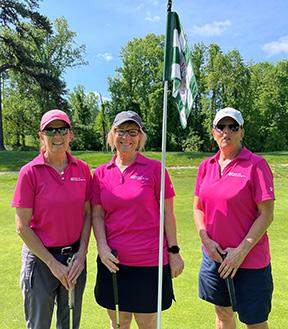
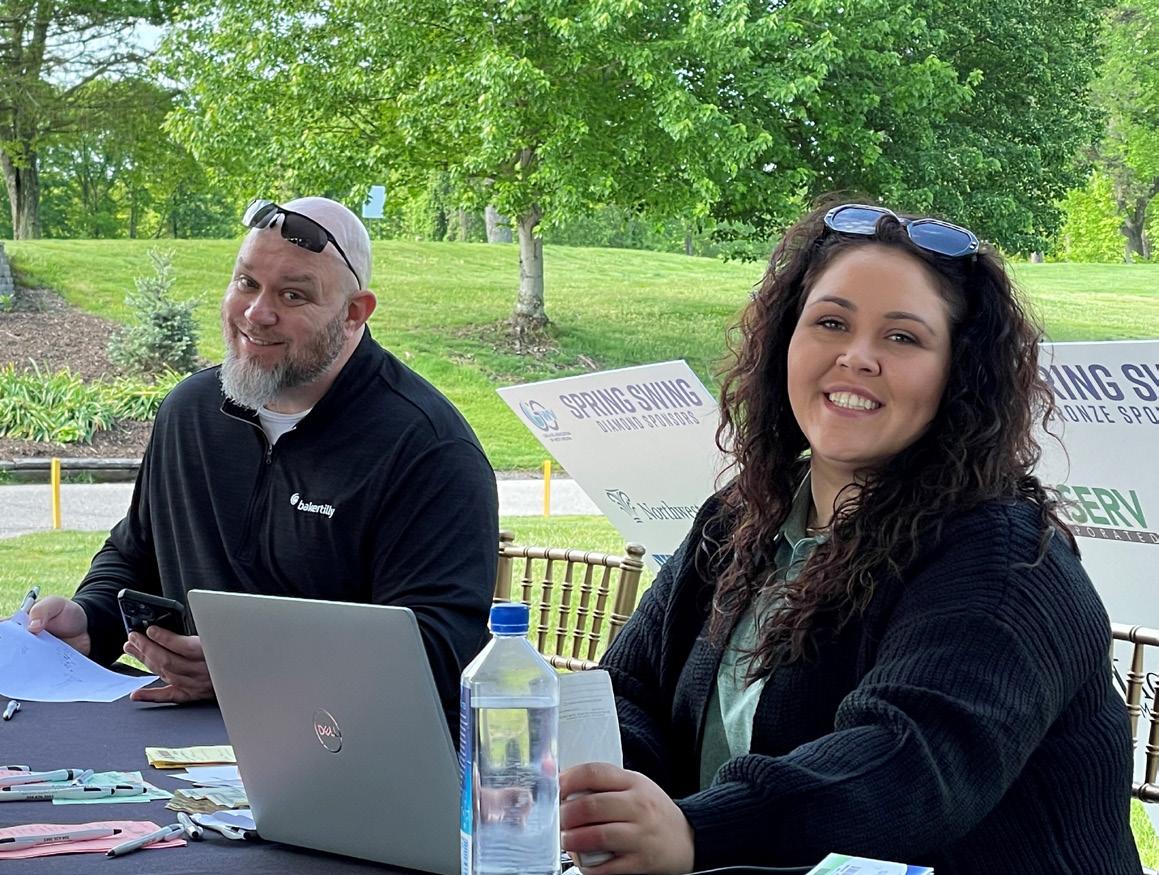
Please see pages 16 and 17 and be sure to thank our sponsors.

Winners for the 2023 Spring Swing were:
First place: Michael Queen, Ben Guyer, Adam Gissy and Ben Pinkney.
Second place: Charles Clark, Steve Gandy, Mike Schafer and Jason Pendel.
Skins, hole 4 winners: Michael Queen, Ben Guyer, Adam Gissy and Ben Pinkney.
Longest drive on hole 5: Adam Gissy.

Longest putt on hole 11: Eric Vir.
Closest to the pin on hole 12: Andy Travis.
14
Jeff Isner Vice President and Program Chair
Above, Scott Hollen of Baker Tilly and Katie McCracken of GO-WV get golfers registered for the day.
Above, from left, Billie Lester, Kathy Hill and Bobby Lowther enjoyed Spring Swing 2023.
At right, from left, Bob Runions, Kelly Moss, Jason Porter and Drew Keaton had a great day at Berry Hills Country Club for GO-WV's Spring Swing 2023.
At left, from left, Jonathan Morgan, Jeff Isner, Trevor Schaffer and Eric Vir were photographed at the hole sponsored by Northeast Natural Energy.

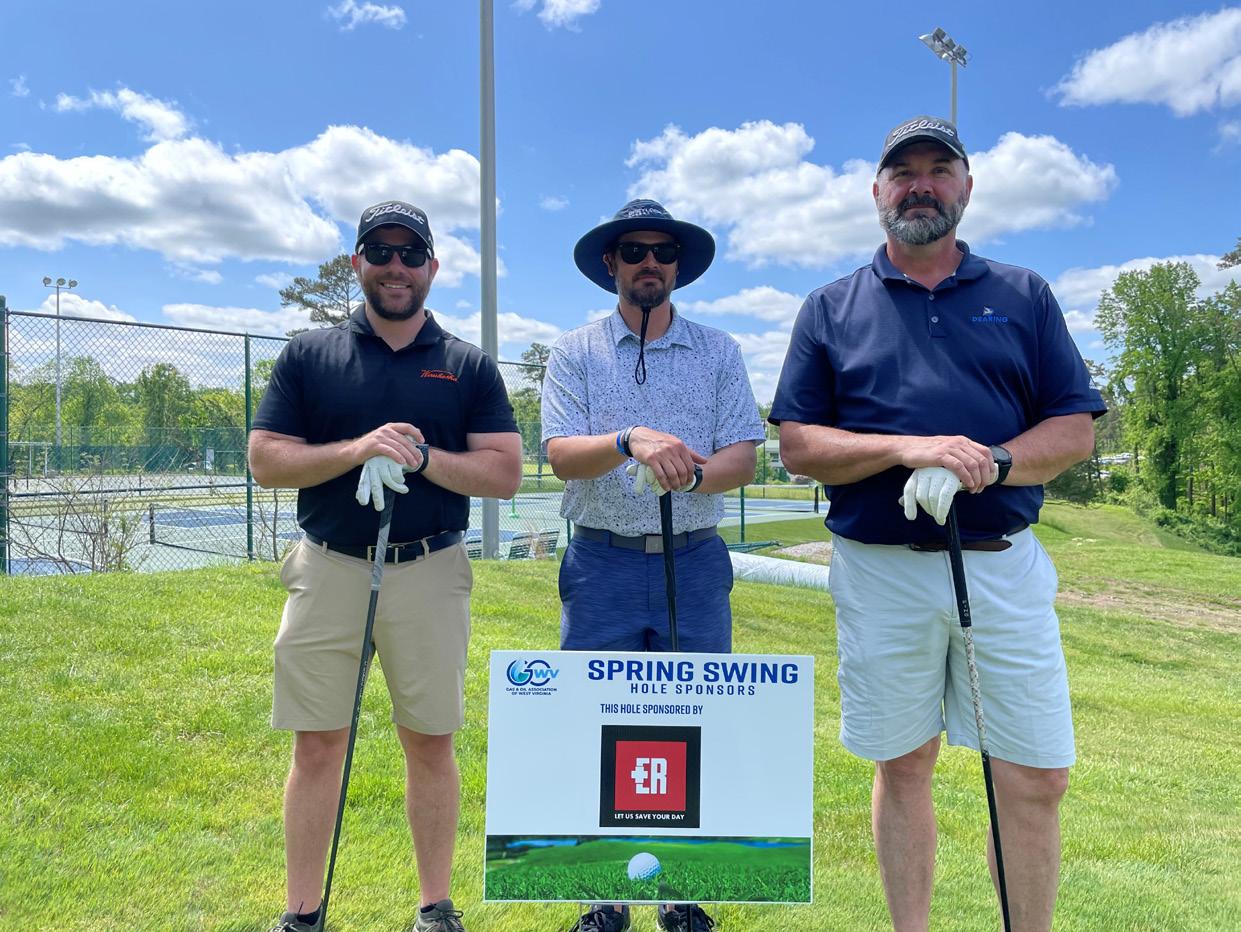
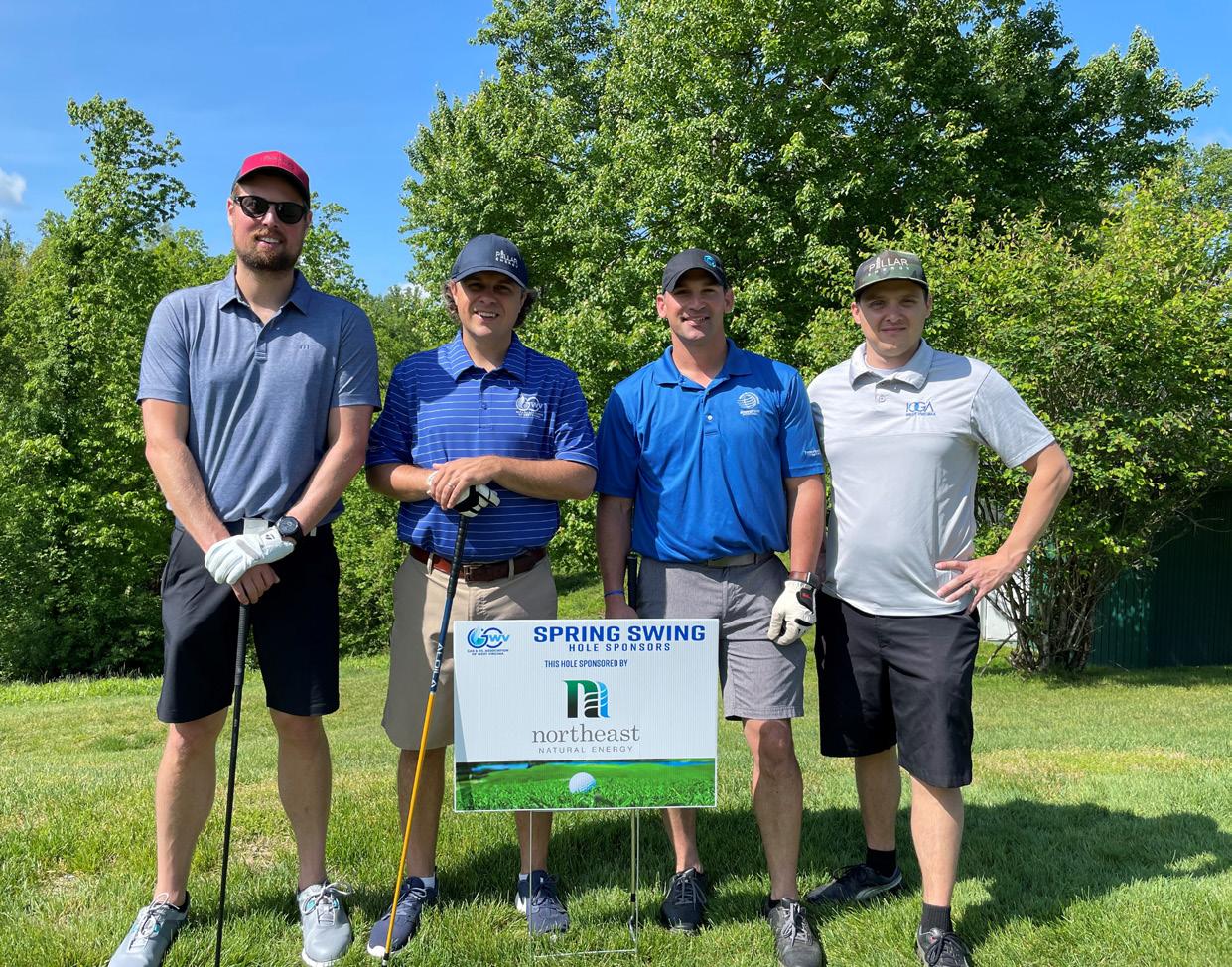


Below, Jack Bunn, Jeremy
Rob
15
Stanley,
Groom and Patrick O'Malley were photographed at the hole sponsored by Waukesha.
Below, Shane Cunliffe, Kyle Flanagan and Bryon Helton were pictured at the hole sponsored by Energy Resolutions.
At right, Josh Wray, Adam Rowh, Daniel Berry and Chad Burns were photographed at the hole sponsored by Apex Pipeline Services.
Jeff Isner Vice President and Program Chair

Thanks to our Spring Swing sponsors



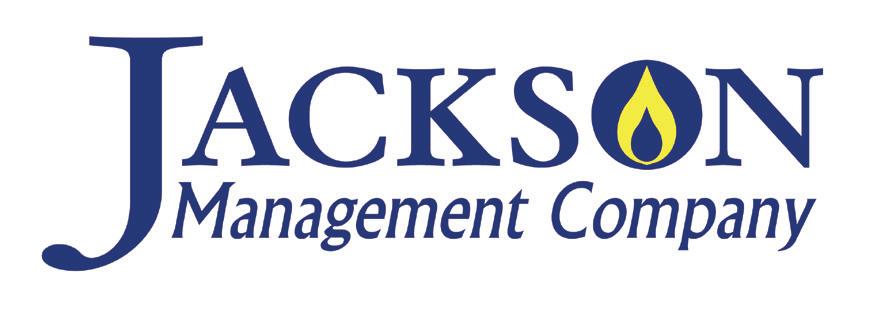

Diamond Sponsors




Bronze Sponsors


16
Hole Sponsors

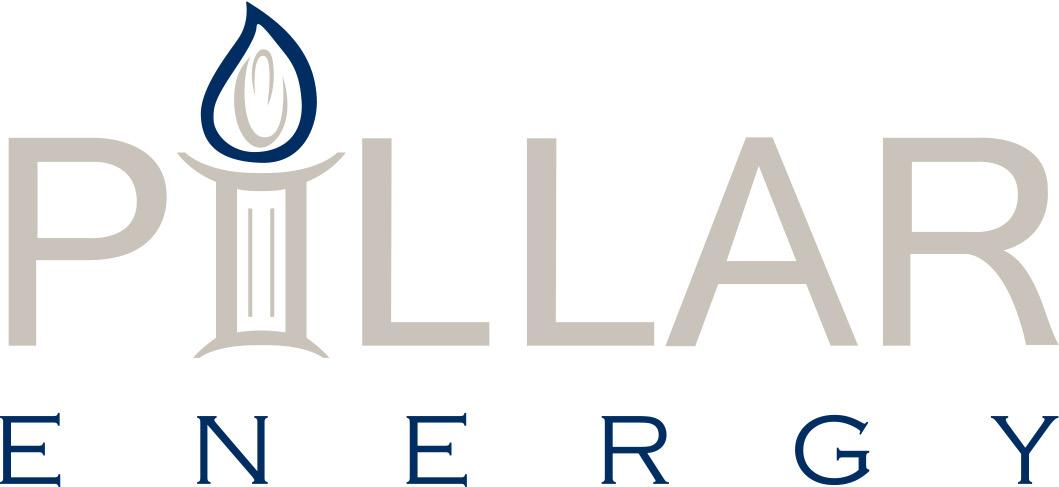
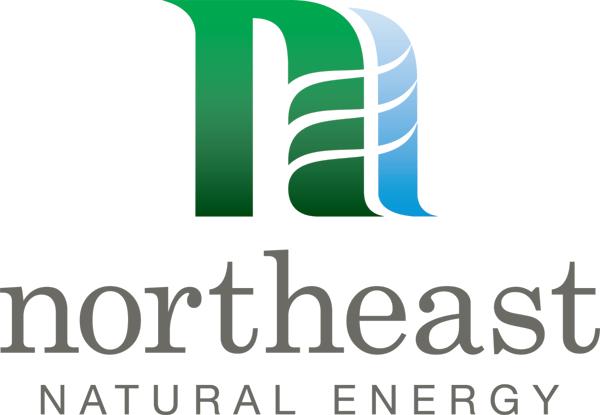


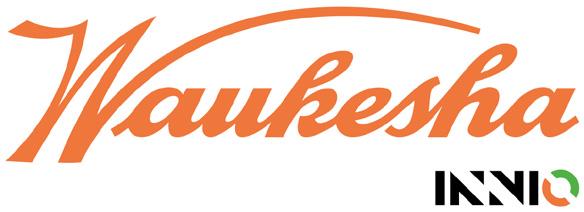













17



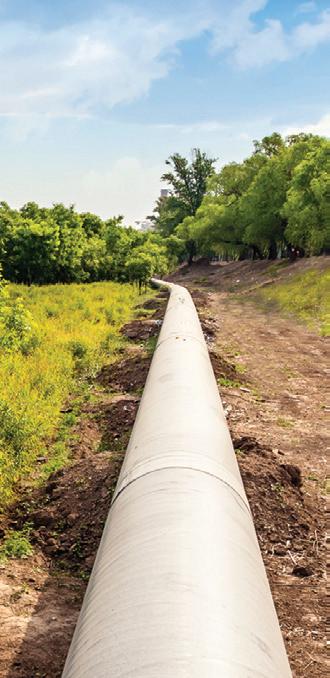





18 Meet our attorneys at babstcalland.com. We are critical thinkers who are focused, driven and cost effective in everything we do. PITTSBURGH, PA | CHARLESTON, WV | SEWELL, NJ | STATE COLLEGE, PA | WASHINGTON, DC Environmental & Regulatory Pipeline & HazMat Safety Energy & Natural Resources Business Transactions Real Estate, Land Use & Zoning Commercial Litigation Industry Intelligence. Focused Legal Perspective. Unparalleled Value. HIGH-YIELDING RESULTS.
leak detection technologies that meet PHMSA’s proposed detection sensitivity requirements. The proposed frequencies for the leakage surveys vary based on the type and location of the pipeline, valve, flange, tie-in or launcher and receiver facility.
Development of Advanced Leak Detection Programs
PHMSA proposes to require that operators develop a written Advanced Leak Detection Program (ALDP). Operators would need to develop procedures that specify how they intend to perform leakage surveys, as well as pinpoint and investigate leaks. Among other requirements, operators would need to identify the leak detection technology they intend to use in their programs after considering several prescribed factors, and an operator’s ALDP must select a leak detection device that is capable of detecting and pinpointing all leaks that have a sufficient release rate to produce a reading of 5 parts per million when measured from a distance of 5 feet or less from the pipeline or within a wall-to-wall paved area. It is not clear whether this leak detection device sensitivity threshold is practicable or consistent with existing EPA LDAR regulations.
Leak Grade and Repair Requirements
PHMSA proposes stringent leak grade and repair regulations that would require operators to classify and repair all detected leaks on their pipeline systems. Operators would need to determine whether detected leaks qualify as grade 1 (most severe), grade 2, or grade 3 (least severe) based on pre-defined narrative criteria or specified percentages of the lower explosive limit (LEL). For a grade 1 leak, an operator would be required to take immediate and continuous action to repair the leak upon detection. A grade 2 leak would need to be repaired within 6 months of detection, but an operator must also re-evaluate the leak every 30 days until the repair is complete. In addition, an operator would be required to develop procedures to prioritize grade 2 leak repairs, and a grade 2 leak located on a transmission line or Type A gathering line in an HCA, or a Class 3 or 4 location would require repair within 30 days. A grade 3 leak would need to be repaired within 24 months of detection, and re-evaluated every 6 months until the repair is complete, unless the

operator replaces the pipeline segment containing the leak within 5 years of detection. The proposal would establish post-repair inspection and leak repair verification requirements, provide for the downgrading and upgrading of leak classifications, and allow an operator to request that PHMSA extend the regulatory deadlines for completing for repairs. We note that PHMSA’s proposed leak grading scheme is not an approach adopted by EPA in its LDAR regulations, which generally include a concentration-based leak definition above which a repair is required.
Exceptions for Compressor Stations
PHMSA would not apply the proposed leakage survey, patrolling, ALDP, leak grade and repair, and personnel qualification requirements to compressor stations on gas transmission or gathering lines if the compressor station is already subject to the EPA’s LDAR standards. More specifically, compressor stations would be exempt from these proposed PHMSA requirements if they are subject to EPA’s methane detection monitoring and repair requirements under 40 CFR Part 60, Subparts OOOOa or OOOOb, or relevant standards in an EPA-approved State Plan or Federal Plan that is at least as stringent as EPA’s proposed requirements at 40 CFR Part 60, Subpart OOOOc. The EPA “requirements” PHMSA references as being in place under 40 CFR Part 60, Subparts OOOOb and OOOOc are the subject of a proposed rulemaking by EPA, and they have not been promulgated in final form. Furthermore, EPA’s proposed greenhouse gas emission guidelines under 40 CFR Part 60, Subpart OOOOc, if finalized, would generally apply to compressor stations constructed prior to November 15, 2021, but these emission guidelines would be implemented directly by states after what could be a lengthy EPA review and approval process.
Reporting
PHMSA is proposing to amend Part 191 to require operators to report estimated emissions attributed to leaks, other estimated emissions from stationary sources, and the number and grade of leaks an operator detects and repairs.
PHMSA is also introducing a new large-volume gas release report that would require an operator
19 PHMSA rules Continued from page 3
PHMSA rules Continued on page 20
to report within 30 days an unintentional or intentional release of 1 million cubic feet or more from a gas pipeline facility.
The NPRM would also require operators to submit data about offshore gas gathering lines, and Type A, Type B, and Type C gas gathering lines to the National Pipeline Mapping System. This provision exceeds the existing statutory mandate for NPMS.
Mitigating Emissions from Venting
To limit methane emissions caused by venting events such as blowdowns and tank boil-off, the NPRM would require operators of gas transmission, Type A gathering, regulated offshore pipelines, and LNG facilities to choose from a list of emission reduction methodologies, such as routing gas to a flare stack or reducing the operating pressure of a line prior to venting. Operators would be required to document the methodologies they choose and describe how the chosen methodologies reduce emissions.
Design, Configuration, and Maintenance of Pressure Relief Devices
The NPRM would require a documented engineering analysis to demonstrate that new, replaced, relocated, or otherwise changed pressure
relief and limiting devices on Part 192-regulated pipelines have been designed and configured to minimize unnecessary releases of gas. Operators must also develop operations and maintenance procedures to assess pressure relief devices as well as procedures to provide for the repair or replacement of the devices, if necessary.
Qualifications
The NPRM would require personnel that conduct leakage surveys, leak grading, and leak investigations on certain facilities to be operator qualified under Part 192, subpart N.
LNG Facilities
PHMSA proposes to require operators to conduct quarterly leakage surveys of equipment or components at LNG facilities that contain methane or LNG. The surveys would require use of leak detection equipment capable of detecting a methane leak that produces a reading of at least 5 parts per million when located within 5 feet of the equipment being surveyed.
PHMSA would require LNG facility operators to develop procedures to eliminate leaks and minimize releases of gas, conduct leak surveys and address any methane leaks according to their maintenance procedures or abnormal operating procedures.
PHMSA also proposes that LNG operators adopt blowdown and boiloff emission reduction methodologies from a PHMSA-proposed list. PHMSA’s list includes use of a flare or isolation of smaller piping segments, but also would allow operators to propose their own “alternative method,” if the operator can demonstrate it would reduce emissions by 50% as compared to taking no emission mitigation measures.

Underground Natural Gas Storage Facilities
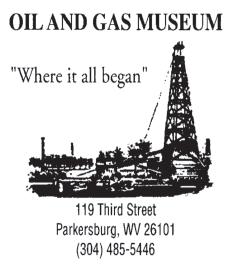
The NPRM proposes to amend Sec. 192.12(c) to require operator procedural manuals to include procedures for eliminating leaks and minimizing releases of gas from storage facilities.
For a more detailed assessment of how this NPRM could affect specific asset profiles, please contact Brianne Kurdock at bkurdock@babstcalland.com, Jim Curry at jcurry@babstcalland.com, Gary Steinbauer at gsteinbauer@babstcalland. com or Lee Banse at lbanse@babstcalland.com
20 PHMSA rules Continued from page 16
to gasoline stations. It just ain’t that tough to figure out!
3. New or alternative transportation fuels in the foreseeable future include hydrogen, natural gas and even propane. Most hydrogen is produced using coal or natural gas as feedstocks. So, the effort to eliminate natural gas to convert to hydrogen goes in the direct opposite direction of what is needed to make these fuels commercially viable. It just ain’t that tough to figure out!
4. Power generation is the next great opportunity for natural gas. In fact, according to Statista, in 2022, the U.S. had the largest number of natural gas power stations in the world at 987 plants, and the greatest natural gas power ca-
pacity of any country, at nearly 530 gigawatts. Clean burning natural gas has up to 70% less emissions than other power producing fuels— It just ain’t that tough to figure out!
5. MORE: medicines, sanitary systems, plastics, food service, home heating, synthetics… it’s endless, and...It just ain’t that tough to figure out!
Not that you need to be reminded, but it is not just the Sierra Club. There are hundreds of organized environmental activist groups, colleges, universities and others that protest fossil fuel development. While the members of these groups “support the cause,” every one of them take advantage of the benefits of natural gas and oil development. I venture to say the VAST majority have a cell phone, drive a vehicle, have a set of Tupperware and glassware in their kitchen cabinets, enjoy fresh water, eat fresh vegetables and fruits, and have sanitary services—all derived in some manner from natural gas and its derivatives. I am reminded of the flotilla of kayak activists that took to the waters of Seattle's Elliott Bay in 2018 to protest an oil tanker. Guess they were ignorant of how that kayak came to be!!
For someone who has devoted his entire career to the natural gas and oil industry, these actions and accusations are disheartening. But we continue to persevere. We know the facts, and we understand how important natural gas and oil will remain to this great nation long into the future.
So why do we refuse to concede to all this? It's simple. Fearmongering is harmful to our state, nation and global economies. Hypocrites use fear as a tactic to advance their point of view. This is wrong and deceptive. I believe it was Daniel Patrick Moynihan, former ambassador, senator, and presidential adviser who said, “Everyone is entitled to his own opinion, but not to his own facts.” And the facts present themselves. The world relies on natural gas and oil to stabilize their energy needs, energy security and national security.
Contrary to the actions of these groups and others supporting positions that seek to challenge our energy independence, natural gas and oil are vitally important to the country; both as a source of energy and in reestablishing our energy dominance globally. It just ain’t that tough to figure out!

21 Burd's Nest Continued from page 4
Connect with us: bakertilly.com Combining forces to serve you better advisory. tax. assurance.
© 2022 Baker Tilly
US, LLP
Juliana Veazey has been named to receive the Dale Rettinger scholarship which honors highest academic achievement. Veazey is graduating from Charleston Catholic High School and will be attending West Virginia University. Her father, Chris Veazey, is employed by Diversified Energy.

Bryan Boggs has been named to receive the Kenny Greenlief Scholarship, funded by Waco Oil & Gas. Parsons is graduating from Little Kanawha Valley Christian School and will be attending Glenville State University. His father, Mark Boggs, is employed by BHE GT&S.

William Behrens has been named to receive the Rubin Scholarship. This scholarship, funded by Steve Rubin, honors Dan, Sam and Stan Rubin, for their contributions to the oil and gas industry in West Virginia. Behrens is graduating from Notre Dame High School and will be attending West Virginia University. His father, William Behrens, is employed by Baker Tilly.
Ryan Hall has been named to receive the Brian Fox Scholarship which is funded by the Fox family to recognize his life and commitment to the oil and gas industry. Hall is graduating from Bridgeport High School and will be attending West Virginia University. His mother, Jodi Hall, is employed by Baker Tilly.


Kyan Douglass has been named to receive the Duncan Malcolm Scholarship which recognizes a commitment to education and music. Douglass is graduating from Roane County High School and will be attending West Virginia University. His father, Doug Douglass, is employed by ConServ.


Lacy Hicks has been named to receive the ConServ Scholarship which is funded by the Freshwater family to recognize those serving the oil and gas industry. Hicks is graduating from Calhoun County High School and will be attending Glenville State University. Her father, Scott Hicks, is employed by Hope Gas.

22
Scholarship winners Continued from page 1
Scholarship winners Continued on page 24
1,000 acres of windmills or solar panels that don’t guarantee 24/7/365 power. Hydrogen is a possible energy source for the future, but is decades away from being commercial. It will be expensive. Hydrogen is extremely flammable and explosive. Safety must be a major consideration. Hydrogen is now being tested for use in powerplants.
Modern drilling technology may help geothermal energy become a greater contributor to the world’s energy mix. Small nuclear reactors may help nuclear power become a larger portion of the USA’s energy. The world’s energy sources will continue to evolve and change...maybe di-lithium crystals like in “Star Trek” . But not wind and solar unless we choose to spend a lot of time in cold and darkness. Natural gas and oil will be important for a long time until new sources are discovered. Molecules like ethane, propane, butane and methane will still be essential to make the products we use every day.

We need to think globally. U.S. natural gas can be used to reduce emissions from coal, wood and animal waste in India, China and developing countries. Global CO2 emissions have yet to peak.
According to the EPA, since 1980 U.S. carbon monoxide levels are down 81%. Ozone levels are down 30%. Particulate levels have dropped 41% since 2000. CO2 levels are down 20%+ since 2005. The air is noticeably cleaner in places like

Pittsburgh and Charleston. What many people don’t know is that as emissions of all types were reduced the USA’s use of natural gas increased.
The EPA is proposing new regulations to further restrict emissions from U.S. power plants, at great cost to consumers. People on fixed incomes, like seniors, won’t be able to pay utility and prescription costs. Young people like my grandson, trying to raise a family, will be hurt. Federal and state utility subsidies are NOT the answer. They make people government dependent. A form of slavery. My new great-granddaughter deserves clean air, clean water and economical dependable energy. The USA has the resources. Cost to the consumer needs to be part of any EPA proposal. Leadership can bring manufacturing back to the USA and deliver U.S. environmental successes to the world reducing global emissions.
We can solve our energy and environmental problems economically. All energy sources have benefits and problems. A mix of all energy sources can take advantage of the benefits of each, like the dairy farm in Maryland using solar during the day and a natural gas generator at night. Natural gas needs to be a major part of the energy mix. We need leaders who care about people and can bring people together. True leaders are visionaries who can build effective teams. The U.S. gas and oil industry needs to part of the team.
23 Energy transition Continued from page 10
Scholarship winners Continued from page 22
Grant LeFevre has been named to receive a GO-WV scholarship. LeFevre is graduating from Morgantown High School and will be attending West Virginia University. His father, Craig LeFevre, is employed by Antero Resources.

Jace Meadows has been named to receive a GO-WV scholarship. Meadows is graduating from Ravenswood High School and will be attending West Virginia University Parkersburg. His father, Jason Meadows, is employed by Meadows Well Service.

McKinnley Riley has been named to receive a GO-WV scholarship. Riley is graduating from Lincoln High School and will be attending Fairmont State University. Her father, Clay Riley, is employed by The Thrasher Group.

Rafe Riley has been named to receive a GOWV scholarship. Riley is graduating from Philip Barbour High School and will be attending West Virginia Wesleyan. His father, Randall Riley, is employed by Top Drilling.
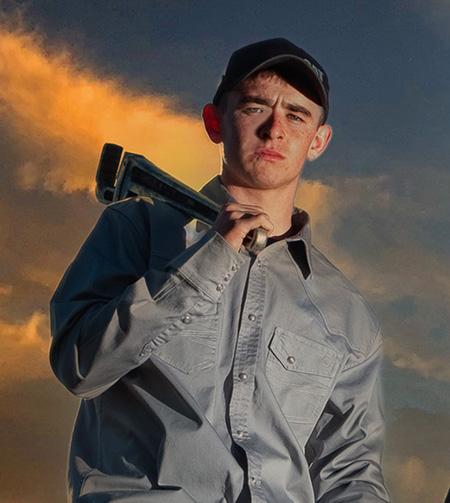


Brody Seckman has been named to receive a GO-WV scholarship. Seckman is graduating from Tyler Consolidated High School and will be attending West Virginia University. His father, Jeff Seckman, is employed by Antero Resources. Kevin Ellis made the presentation.
September 15-16 Bridgeport Country Club
Details coming soon!
24
THE DATE GO-WV Sports
SAVE
Weekend
Business isn't the only item on Monday's agenda; there will be sporting events, as well, with something for everyone.
• The morning begins with the men’s and women’s doubles tennis tournament from 9:00 a.m. to 11:30 a.m. at the Tennis Club.
• The Trap & Skeet Tournament will take place at The Greenbrier Gun Club on Kate’s Mountain Monday, August 14, with shooting times available from 9:30 a.m. to 5:30 p.m. Practice times will be available on Sunday. Please call (800) 624-6070 to make practice and tournament reservations at the Gun Club.
• Golf tee times are available Monday on the Meadows Course from 11:37 a.m. to 12:27 p.m.
• The mixed doubles tennis tournament takes place from 1:30 p.m. to 4:00 p.m. Monday at the Tennis Club.
Monday evening features dinner on your own. Following dinner, wear your GO-WV badge and head to the casino for our After Dinner Reception at 8:30 p.m. The Casino Night fun will feature a private GO-WV bar and the opportunity to enjoy an evening with friends and your favorite casino games. Music and dancing are also available. Tuesday begins our second set of industry presentations from 9:00 a.m. to 11:00 a.m. in the Eisenhower Room. Guest speakers include Governor Jim Justice, Christopher Guith with the U.S. Chamber of Commerce, Hope Gas President and CEO Morgan O'Brien and WV Public Service Commission Chair Charlotte Lane. GO-WV Executive Director Charlie Burd and Philip A. Reale of the Law Office of Philip A. Reale, PLLC, will provide our legislative update.
The festivities then move back outdoors for more sporting fun. The Trap & Skeet Tournament enjoys its second day of competition from 9:30 a.m. to 3:30 p.m.
The shotgun-start golf tournament will take place on the Old White course Tuesday, August 15, beginning at 12:30 p.m. To sign up for the tournament, please contact Joanna Honaker at (304) 536-4919 or joanna_honaker@greenbrier. com.

For those who aren’t golfing Tuesday, join us at noon for a special treat. Immerse yourself in a creative workshop that will combine the practices of watercolor painting with ink pens. Artists and non-artists alike will experience how to develop their own floral design then add the fluidity of watercolor paints and the precision of pens for a unique, expressive result. Inspired by the details of sketching, you will have all materials needed during the workshop to get into a mindfulness place. The cost of this workshop is $200 per person and includes lunch and all professional-grade materials (which you will take home). Your Summer Meeting adventure concludes Tuesday evening with an awards reception at the Outdoor Pool from 7:00 p.m. to 8:00 p.m.
A luau dinner will follow the awards reception, also at the Outdoor Pool, from 8:00 p.m. to 10:00 p.m. This special evening will conclude with music, dancing and fireworks!
To make reservations for Trap and Skeet, call 1-800-624-6070. Please call Jessica Dowdy at (304) 536-1110 ext. 4943 or jessica.dowdy@ greenbrier.com to make your room reservation by June 23.
Registration is open online at www.gowv.com. You can also use forms on pages 28 and 29.

25
Summer Meeting Continued from page 1
The Court’s majority opinion in Sackett was written by Justice Samuel Alito, with concurring opinions written by Justices Thomas, Kavanaugh and Kagan. The Justices unanimously agreed that the wetlands on the Sacketts’ property were not WOTUS and that the “significant nexus” test should not be used to determine federally regulated wetlands. Justice Clarence Thomas’ concurring opinion focused on the meaning of “navigable,” and appeared to advocate for an even more narrowed scope of federal regulation. The two other concurring opinions disagreed with the majority regarding the meaning of “adjacent” and asserted that adjacent wetlands should also include wetlands that are “close to, neighboring or not widely separated” from the covered water. Justice Brett Kavanaugh stated that adjacent wetlands mean “more than adjoining wetlands and also includes wetlands separated from covered waters by manmade dikes or barriers, natural river berms, beach dunes or the like.”
The Sackett ruling has immediate, practical consequences. With the elimination of the “significant nexus” test, the extent of wetlands considered to be WOTUS will markedly decrease, thereby decreasing the need for Corps permitting for land development, pipeline construction and other earth disturbance activities. In addition, the Court’s ruling will likely provide more certainty to the regulated community, as to which wetlands are regulated. Generally speaking, a “continuous surface connection” (or the lack of one) is easier to identify than a “nexus” that was often subjectively determined. However, as acknowledged by the majority, “temporary interruptions in surface connection may sometimes occur because of phenomena like low tides and dry spells.” The Court also seemingly acknowledged and addressed a potential “loophole” for federal regulation by noting that “a landowner cannot carve out wetlands from federal jurisdiction by illegally constructing a barrier on wetlands otherwise covered the CWA.”
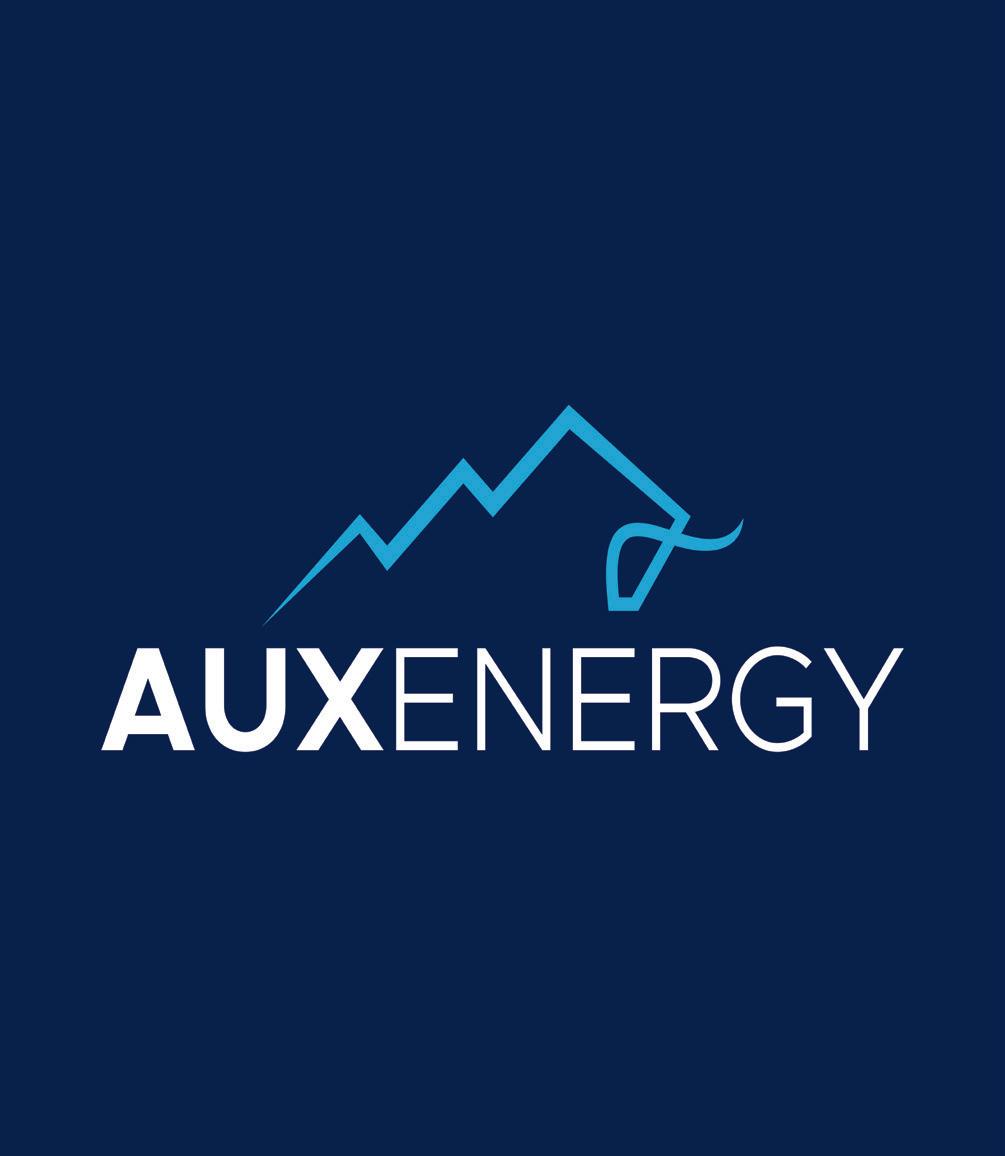
Even though Sackett pertains directly to wetlands, it also calls into question the tests used for determining whether “waters” are WOTUS. By rejecting the “significant nexus” test, the Court has effectively weighed in on the appropriate (and more narrow) test for determining whether streams and other waterbodies are federally
regulated (i.e., whether the waterbody is relatively permanent).
While Sackett narrowed federal regulation of wetlands, it is important to note that state stream/ wetland and earth disturbance laws may still apply to specific projects and development. Typically, states broadly define the waters under their jurisdiction. For example, the West Virginia regulations define “water” to include “any and all water on or beneath the surface of the ground.” In light of the broad-reaching implications of Sackett, states may seize this opportunity to develop and/ or strengthen their stream and wetland permitting programs.

Other WOTUS Developments
The Sackett decision comes just two months after the Biden administration’s new definition of WOTUS (2023 Rule) became effective. The 2023 Rule defines WOTUS using both the Justice Scalia test for relatively permanent waters and adjacent wetlands, as well as the Justice Kennedy “significant nexus” test. The Biden administration expressed concern that the “Supreme Court’s disappointing decision” would take the country “backwards” with Sackett decision
Continued on page 27
26
Sackett decision Continued from page 6
regard to the protection of water quality. In a statement issued just after the publication of the Sackett decision, President Biden stated: “My team will work with the Department of Justice and relevant agencies to carefully review this decision and use every legal authority we have to protect our Nation’s waters for the people and communities that depend on them.” We will be watching to see how USEPA and the Corps react in light of Sackett.
The 2023 Rule has already faced three judicial challenges in Texas, North Dakota and Kentucky. These challenges have resulted in a nationwide split in the current definition of WOTUS, with 23 states using the 2023 Rule and 27 states relying on the WOTUS definition that was in effect prior to the 2023 Rule (i.e., the 1986 definition as influenced by the U.S. Supreme Court decisions from the 2000s, especially Rapanos). As a result, West Virginia and Pennsylvania, for example, currently rely on different WOTUS definitions to determine federal

CWA jurisdiction.
Even without the extensive changes associated with Sackett, this nationwide split creates inconsistencies on how CWA jurisdiction is applied from state to state. A water may be regulated under the CWA based on the effective WOTUS definition in one state, while the same water would not be federally-regulated under the WOTUS definition effective in another state.
One thing is certain, the landscape for determining federally-regulated waters is changing again, and the regulated community must stay abreast of these changes.
Babst Calland will continue to stay up-to-date on the developments related to WOTUS and the Clean Water Act, in general. If you have any questions or would like any additional information, please contact Lisa Bruderly at (412) 394-6495 or lbruderly@babstcalland.com.

27
Sackett decision Continued from page 26 getting YOUR message to the right people homestead communications po box 13604 | charleston, wv 25360 304.984.0308 | homesteadcommunications@frontier.com CHomesteadommunications
2023 GO-WV Newsletter Advertising Contract
Advertising is available to member companies and nonmembers of the Gas and Oil Association of WV, Inc. (GO -WV) in monthly issues of the association newsletter. Please see below for details regarding ad sizes and rates.
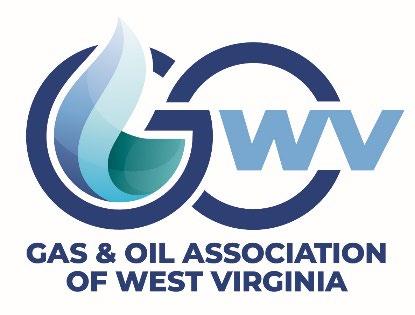

GO - WV wants to assure that you get the best quality advertisement in the newsletter for your advertising dollar. To that end, we ask that you submit your color ad electronically in a 300 dpi (dots per inch) resolution JPG or PDF format. Ads saved as Word or Word Perfect documents or Excel spreadsheets will not give you a quality ad in the publication . If there are conversion issues with your file, our designer will contact you directly. Ads must be emailed directly to Diane Slaughter: dslaughter@gowv.com.
Ads can be run each month throughout the year or in any combination of months you choose. Please note there is a price break when you commit to a longer contract. Changes to your ad copy or cancellations can be made during the duration of the contract, but must be submitted 30 days prior to the next publication. (i.e, February 1 st for the March issue). Please complete the information requested below and return this page, with payment, to GO -WV News letter, GO- WV, 300 Summers Street Suite 820, Charleston, WV 25301; email dslaughter@gowv.com Ads must be paid in full by check or credit card prior t o publication. Please call Diane Slaughter at (304) 984 -0308 to discuss these options.
28 Newsletter advertising contract
Membership
Frequency of Ad (Months) 1 - 4 5 - 8 9 - 12 Ad Sizes Full page 2 columns (7 ” wide x 9.5” deep ) $800.00/mo $750.00/mo $700.00/mo Half page (vertical) 1 column (4 5/8” wide x 9.5” deep ) $525.00/mo $475.00/mo $425.00/mo Half page (horizontal) 2 columns (7” wide x 4.5” deep ) $500.00/mo $450.00/mo $400.00/mo Quarter page 1 column (4 5 /8” wide x 3” deep ) $300.00/mo $250.00/mo $200.00/mo Business card 1 column (4 5/8” wide x 2” deep ) $150.00/mo $125.00/mo $100.00/mo Non - Membership Pricing: Frequency of Ad (Months) 1 - 4 5 - 8 9 - 12 Ad Sizes Full page 2 columns (7” wide x 9.5” deep) $1,600.00/mo $1,500.00/mo $1,400.00/mo Half page (vertical) 1 column (4 5/8” wide x 9.5” deep) $1,050.00/mo $950.00/mo $850.00/mo Half page (horizontal) 2 columns (7” wide x 4.5” deep) $1,000.00/mo $900.00/mo $800.00/mo Quarter page 1 column (4 5/8” wide x 3” deep) $600.00/mo $500.00/mo $400.00/mo Business card 1 column (4 5/8” wide x 2” deep) $300.00/mo $250.00/mo $250.00/mo
Pricing:
License plate application
West Virginia Department of Transportation Division of Motor Vehicles Application for a Gas & Oil Association of WV License Plate

I certify that all information on this application is true and correct and if I cease to be in good standing with the above organization, I will immediately return the special license plate to the Division of Motor Vehicles.
E) Application Information
1. Anyone is eligible to apply for a Gas & Oil Association of WV license plate.
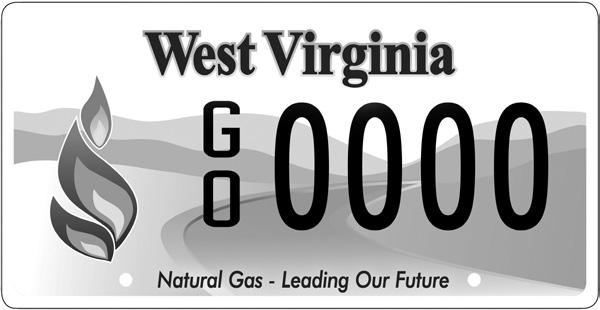
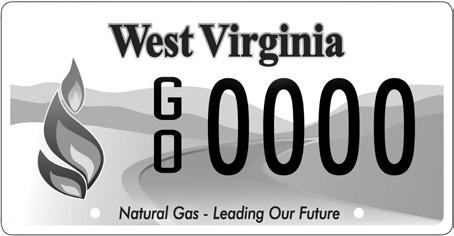

2. A vehicle must be Class A and have a West Virginia title and license plate in the name of the applicant before a special plate can be issued.
3. The current license plate must be returned to the Division of Motor Vehicles after the special plate is received. After issuance of the special plate, the exchanged plate is canceled and cannot be transferred to another vehicle. There are no refunds.
4. A $91.50 fee will cover the cost of the license plate for the 1st year or a portion of the 1st year. This is a at fee for all applicants and is not prorated. This plate will expire on July 1st every year and have a renewal fee of $66.50.
5. Send the application and the $91.50 check or money order payable to Gas & Oil Association of WV at the address listed below. Please include your personal property tax receipt or an a davit from the assessor if your registartion is expiring within 60 days of your application. Gas & Oil Association of WV c/o Charlie Burd 300 Summers St. Suite 820 Charleston, WV 25301
29 1-800-642-9066 dmv.w v.gov DMV-54-GO Rev 05/21
Insurance Company E ective Dates of Policy From: To: NAIC Number Insurance Agent B) Ve h ic l e I n f o rm a tio n C ) I n s u r a n c e I n f o rm a ti o n Policy No. / / / / B) Ve h ic l e n f o rm a tio n Make VIN No. Current Plate No. Year Title No. D) Applicant Certi cation SIGNATURE OF APPLICANT DATE / (X) /
OFFICE
OFFICE STAFF INSTRUCTIONS: Insert the plate numbers on the plate diagram to the left and submit this form to the WV DMV for recording and processing. Be sure to retain a copy for your records. Phone No. ( )
***
USE ONLY BELOW THIS LINE
Name(s) on Registration Applicant’s Name Street Address A) Applicant/ O w ne r ( s ) I n f o rm a ti on · PLATE SAMPLE C I T Y S TAT E Z I P Use Name(s) of Owner(s) as shown exactly on current registration card that you wish to register the license plate.
2023 GO-WV Summer Meeting Sponsorship Form


August 13-15, 2023 | The Greenbrier, White Sulphur Springs, WV
Sponsorship opportunities:
Premier Event Sponsor $25,000
• Banner hung at every event
•Specific signage at sponsored event
•Listing on Premier Sponsor board
•Logo and name listed in event PowerPoint presentation
•Logo listed in event program, web site page and newsletter
Elite Event Sponsor $20,000
• Banner hung at every event
•Specific signage at sponsored event
•Listing on Elite Sponsor board
•Logo and name listed in event PowerPoint presentation
•Logo listed in event program, web site page and newsletter
Diamond Event Sponsor $10,000
• Banner hung at sponsored event
•Specific signage at sponsored event
•Listing on Diamond Sponsor board
•Logo and name listed in event PowerPoint presentation
•Logo listed in event program, web site page and newsletter
______ Platinum Sponsor $5,500
•Listing on Platinum Sponsor board
•Logo and name listed in event PowerPoint presentation
•Logo listed in event program, web site page and newsletter
______ Gold Sponsor $4,000
•Listing on Gold Sponsor board
•Logo and name listed in event PowerPoint presentation
•Logo listed in event program, web site page and newsletter
______ Silver Sponsor $2,000
•Listing on Silver Sponsor board
•Logo and name listed in event PowerPoint presentation
•Logo listed in event program, web site page and newsletter
______ Bronze Sponsor $1,000
•Listing on Bronze Sponsor board
•Logo and name listed in event PowerPoint presentation
•Logo listed in event program, web site page and newsletter
______ GO-WV Friends Sponsor $500
•Listing on Friends Sponsor board
•Logo and name listed in event PowerPoint presentation
•Logo listed in event program, web site page and newsletter
Please return this form to GO-WV, address below, by July 31, 2023. Be sure to email a high resolution (300-dpi minimum) version of your company’s color logo and a link to your web site to lmillersmith@gowv.com. Thank you for your continued support!
30 Summer Meeting sponsor form
www.gowv.com | 300 Summers Street | Suite 820 | Charleston, WV | 25301 P: (304) 344-9867 F: (304) 344-5836
Company Name Contact Person Address City State Zip Telephone Email
2023 GO-WV Summer Meeting Registration Form


August 13-15, 2023 | The Greenbrier, White Sulphur Springs, WV
Please complete and return this form, along with your check, by July 11, 2022. Please type or print the information as you would like your badge to read.
Name on Room Registration
Company Name
Address City, State, Zip, Telephone
Early-bird Registration Fees (before July 23, 2023)
A) Member (per person) $ 425.00
B) Member’s Spouse $ 275.00
C) Children Under 21 (if attending GO-WV events) $ 150.00
D) Children Over 21 $ 275.00
E) Kate’s Mountain Only $ 250.00
F) Kate’s Mtn. Only, < 21 $ 150.00
G) Non-Member (per person) $ 650.00
H) Non-Member’s Spouse $ 400.00
Individuals with special needs (mobility, access, medical diet, etc.) should indicate specific needs in a letter attached to your registration form.
Name as it should appear on badge Circle one Fee
Golf Tee Times should be made directly with Joanna Honaker: email joanna_honaker@greenbrier.com or call 304-536-4919.
31 Summer Meeting registration form
A B C D E F G H $_________ A B C D E F G H $_________ A B C D E F G H $_________ A B C D E F G H $_________ A B C D E F G H $_________ Wildflower Painting Workshop and lunch (for non-golfers) $200 $_________ TOTAL $_________ GO-WV • 300 Summer Street, Suite 820 • Charleston, WV 25301 Phone: 304-344-9867 • Fax: 304-344-5836 NO REFUNDS AFTER JULY 23, 2023



32 300 Summers Street, Suite 820 Charleston, WV 25301 Phone (304) 344-9867 Fax (304) 344-5836

































































































